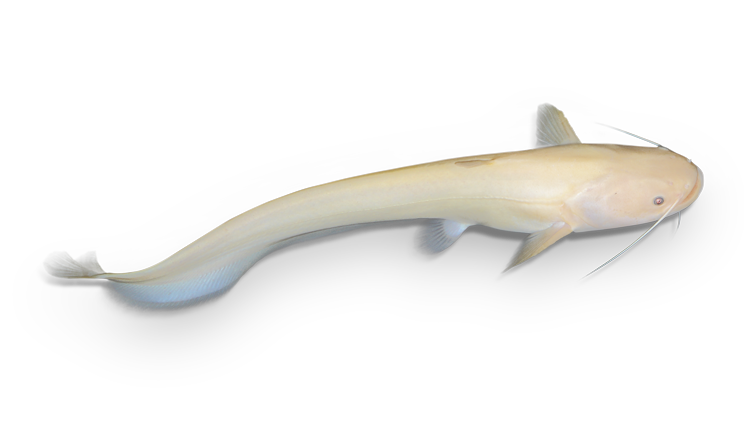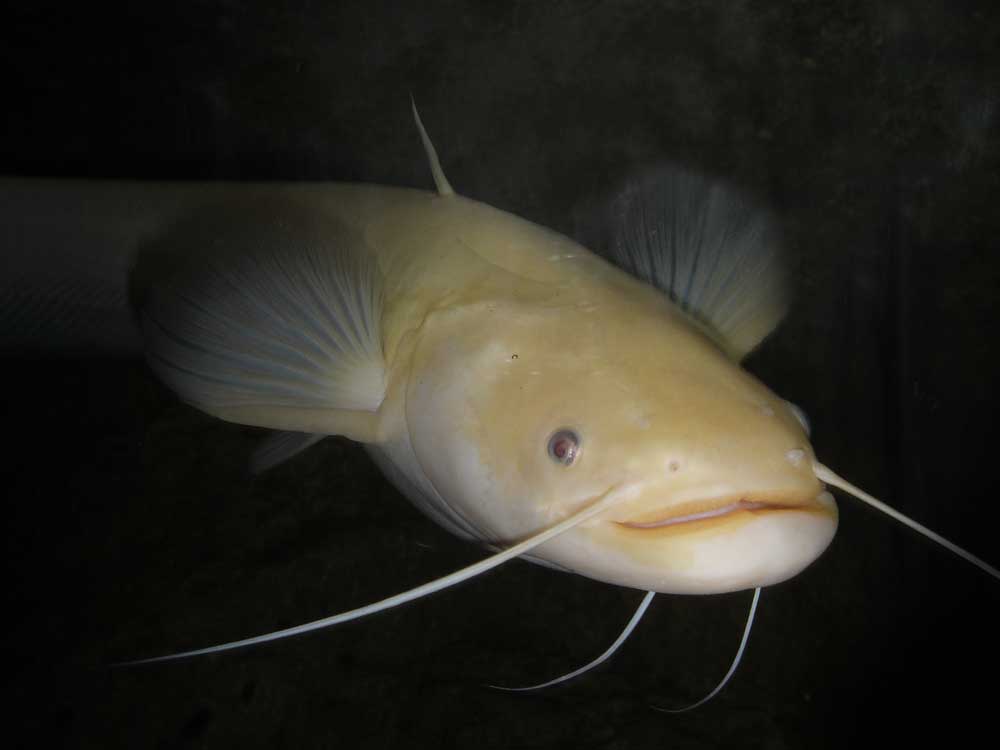
Rare albino catfish
ナマズと地震の関係を解く
Investigating the Relationship Between Catfish and Earthquakes
ナマズは東アジア全域に広く分布する淡水魚で、日本ではもともと西日本に限られていましたが、現在では全国の流れの緩やかな河川や湖沼、用水路などで見られます。最大体長は約60cm。口は大きく、2対のヒゲを備え、鱗は持たず、全身は粘液に覆われていて細菌や外傷から身を守っています。名前の由来は、滑らかな頭を意味する「滑頭(なめず)」が転じたものと考えられています。
日本では古くから地震と結び付けられてきました。大地震を起こす「地震鯰」の姿は多くの浮世絵に描かれますが、その背景にはインド発祥の「大地の下に巨大な蛇がいて、それが地震を起こす」という伝説があります。この世界蛇の物語が日本に伝わる過程で、巨大な蛇はより身近な生物であるナマズへと姿を変えたとされます。特に江戸時代の安政大地震(1855年)後には、ナマズを擬人化した鯰絵が200種以上も出回りました。そこでは地震の元凶としてだけでなく、金持ちを懲らしめる正義の存在として、あるいは庶民を励ますユーモラスなキャラクターとして描かれ、災後の人々の心を慰める象徴にもなりました。
また、この地震を機に「ナマズは地震を予知する」という言い伝えも広まりました。実際に地震直前にナマズが騒いだという古記録もあり、1970〜90年代には東京都水産試験場がその因果関係を約16年にわたり研究しました。ナマズが微弱な電気を感じ取れることから、地震の前兆でプレートが発する電気信号を察知するのではないかと考えられたのです。しかし結論は「前兆との関連は明確ではない」というものでした。とはいえ、震度3以上の地震が発生する前に、ナマズの異常行動が約3割の確率で観測されており、現代のAI地震予測(精度7割以上)と比べれば低いものの、昔の人々の経験則が全くの迷信とも言い切れない一面もうかがえます。

所蔵:国立国会図書館(①,②)国際日本文化研究センター(③,④,⑤,⑦) 東京大学総合図書館(⑥)
The catfish is a freshwater fish widely distributed throughout East Asia. In Japan, it originally inhabited only western regions, but it can now be found nationwide in slow-flowing rivers, lakes, and irrigation channels. It grows to about 60 cm in length, has a large mouth with two pairs of barbels, and lacks scales. Its body is covered in mucus that protects it from injury and infection. The name “namazu” is thought to derive from namezu, meaning “smooth head.”
In Japan, the catfish has long been associated with earthquakes. The “earthquake catfish” appears frequently in ukiyo-e prints, and this imagery is linked to a myth that originated in India, which held that a giant serpent beneath the earth caused earthquakes. As this legend spread to Japan, the serpent was replaced by a catfish—an animal far more familiar to the Japanese, and whose slippery body made it easy to imagine the ground sliding beneath it. After the Ansei Great Earthquake of 1855, more than 200 namazue prints were produced. These images depict catfish not only as the cause of earthquakes but also as humorous figures or just punishers of the wealthy, suggesting that they served as symbols of comfort and resilience for people recovering from disaster.
The same earthquake also popularized the belief that catfish can predict seismic events. Historical records describe catfish becoming unusually active before earthquakes, and this idea persisted into modern times. From the 1970s to the 1990s, the Tokyo Fisheries Experimental Station conducted research for roughly 16 years to investigate this relationship. Because catfish can detect weak electrical signals, researchers hypothesized that they might sense electric currents generated by shifting tectonic plates. Ultimately, the study concluded that no clear correlation could be confirmed.
However, abnormal catfish behavior is observed with a probability of about 30% before an earthquake of magnitude 3 or higher occurs. Although this is lower than modern AI earthquake predictions (which have an accuracy rate of over 70%), it also shows that the empirical rules of ancient people cannot be said to be complete superstition.

There’s something about his humorous face that makes him hard to hate.
参考文献
国立環境研究所 | 日本の外来生物 | ナマズ 2025年11月15日閲覧
YAHOO!ニュース | 魚なのにウロコがないの!?ウロコがない身近な魚3選 | (2023年9月26日) 2025年11月15日閲覧
「大災害を呼ぶ大蛇と法螺貝の伝承」, 機関紙『水の文化』53号ぼくらには妖怪が必要だ, ミツカン水の文化センター 2025年11月15日閲覧
「鯰絵と安政の大地震」港郷土資料館へ行ってみよう!第11号, 港区立港郷土資料館 2025年11月15日閲覧
東京大学地震研究所 | 鯰絵紹介 | 「江戸の鯰たち~幕末の江戸に群れる地震鯰~」 2025年11月15日閲覧
東京消防庁 | 消防今と昔 | なまずと地震 2025年11月15日閲覧
読売新聞オンライン | ナマズ 地震前に暴れる…「地震の電気に反応」未だ解明されず | (2024年5月9日) 2025年11月15日閲覧
日刊建設通信新聞 | 【防災の日2024】東海大学海洋研究所客員教授 長尾年恭氏に聞く ナマズと地震の関係性とは | (2024年9月1日) 2025年11月15日閲覧
鯰の民俗文化会 | 鯰絵〈災害 disaster〉 2025年11月15日閲覧
国立国会図書館サーチ | NDLイメージバンク | 鯰絵 2025年11月15日閲覧
国際日本文化研究センター | 鯰絵コレクション 2025年11月15日閲覧
東京大学相貌図書館 | 石本コレクション 2025年11月15日閲覧